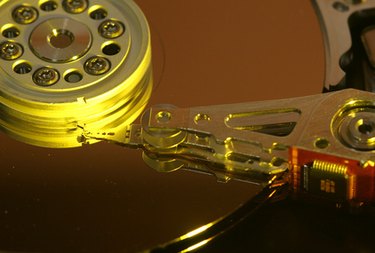
Microsoft Windows comes with Windows Backup, a tool that allows you to back up your data files, a system image and previous versions of files and folders. You can run Windows Backup manually or on a regular schedule.
Location
Video of the Day
Windows Backup keeps log files in "C:\Windows\Logs\WindowsBackups" by default. You may not be able to see this folder or its contents if you aren't an administrator on your computer.
Video of the Day
Skipped Files or Folders
If Windows skips any files or folders during the backup, Windows notes them in a ".log" file. You can use Windows Notepad to open this file to view the skipped files or folders.
Detailed Logfiles
You can view a detailed event log using Windows Event Viewer. Select "Open Saved Log" and navigate to the log's location. Event Viewer will open ".etl" files.